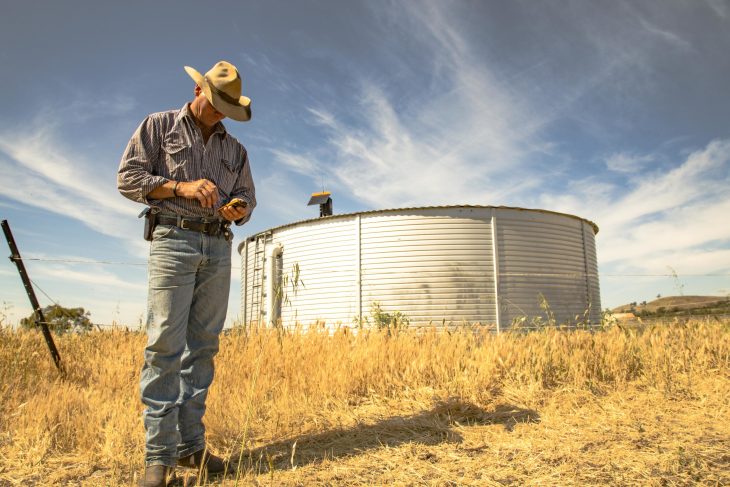Startups designed to use information to boost agricultural productivity are struggling. So now tech companies are changing their approach.
For farmers—and the tech companies that want them as customers—data has been a disappointment.
A few years ago, the agricultural world was full of promises about how the widespread use of data was going to change farming. Companies sprang up that offered to collect huge amounts of information about everything from weather patterns to the soil on farms to the health of crops. The sales pitch: With all this detailed information, farmers would get untold insights into what was happening on their land. And they could use that information to boost production.
But the revolution has been slow to catch on. Many farmers who used the digital services found it difficult to digest the mountains of information and figure out how to put it to use. Many others simply weren’t sold on the idea, or couldn’t afford the investment as crop prices fell.
A new approach
This has changed the outlook to the point where venture capitalists, who drove much of the investment into data-based farming, are approaching agriculture in a different way. Instead of betting on legions of companies that provide farmers information, they’re now pumping money into companies that offer tools and services, such as robotic farm equipment, or on biotechnology and genetic editing of plants, that bring faster and more obvious results.
“It has been a challenge, because the promise of technology hasn’t been able to keep up with expectations,” says Rob Leclerc, chief executive of AgFunder, an online investment marketplace where companies seek funding.
In 2016, investments in data-driven agriculture—known as precision agriculture—fell 39% from a year earlier, according to AgFunder, due in part to a broader decline in drone investments. At the same time, investors see promise in agricultural technology that goes beyond data. Venture-capital investments in the agricultural sector overall rose to $560 million last year from $201 million in 2015, according to PitchBook—and that total excludes hardware like satellites that can be used in agriculture but also have other uses.
Meanwhile, many of the startups at the forefront of the drive toward data have struggled or shifted focus.
Growing interest
The mania for data-focused farming was sparked largely by Monsanto Co.’s nearly $1 billion acquisition of agriculture-data firm Climate Corp. in late 2013. Chasing after such success, venture capitalists and entrepreneurs plunged into companies that could both produce data and provide it to farmers.
The general theory: Farmers armed with hyperlocal data on soil, weather and runoff could program machinery to plant specific types of seeds and fertilizer. Once a tractor moves into a sandier type of soil, for instance, a different seed pops out best suited to the environment. Yields could soar.
Since then, farmers have been deluged with data coming from countless sources, from soil sensors to outer space. But even if farmers want information from drones, satellites and on-ground sensors, it is hard to get the most out of them. Many farmers aren’t trained on how to use software to deal with the data and integrate it with their farming equipment, and different types of machines don’t always work together. Spotty or nonexistent cell reception in rural areas makes it hard for machines to communicate.
Then there is problem of interpretation. While data will tell a farmer things like how much corn a chunk of a field is producing, it is far harder to understand why it is producing and what lessons can be applied to next year’s crop.
“Everybody is still trying to figure out where the value in data is,” says Aaron Ault, a corn and soy farmer on 3,000 acres in Indiana who is also involved in an effort with ties to Purdue University to better integrate agricultural data.
Finding new ground
Arama Kukutai, a partner at agtech-focused Finistere Ventures, says that as a result of the integration challenges, his firm is setting its sights on less-crowded agricultural areas.
Mr. Kukutai’s firm has invested in Plenty United Inc., one of a handful of startups trying to grow leafy greens and other produce in dense indoor locations, through hydroponics and ultraviolet lighting. The theory is that these companies can produce crops like organic lettuce at a level similar to farms, but closer to cities.
Mr. Kukutai and other investors are also looking at robotics companies such as Blue River Technology Inc., a Silicon Valley startup that makes low-slung machines that tractors drag over rows of lettuce. Armed with a camera and pesticide gun, the device scans for weeds and squirts them with pesticides.
Jorge Heraud, the company’s chief executive, say the company’s machines save farmers enough on pesticide use to pay for themselves in as little as 2.5 years. Farmers now use Blue River’s product on more than 15% of the country’s lettuce crops, he says.
Now it is trying to prove it can extend beyond its “lettuce bot” and into bigger categories. Currently in testing: machines that can spray targeted pesticides within cotton fields.
Source: The Wall Street Journal



